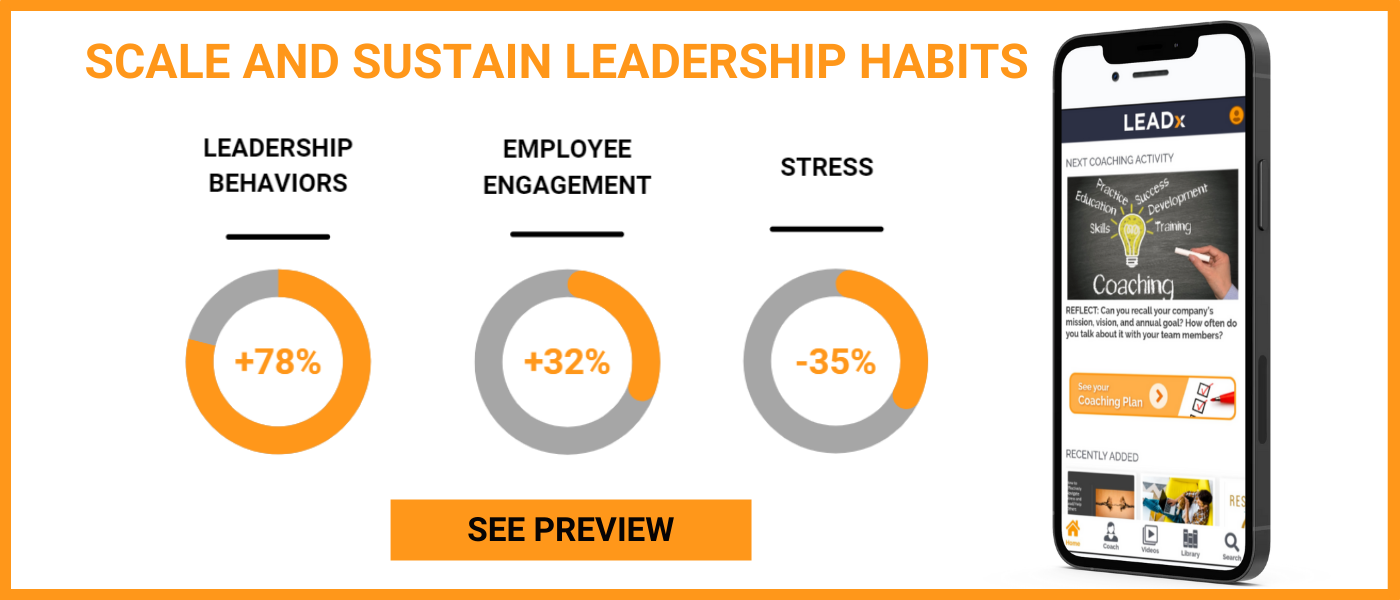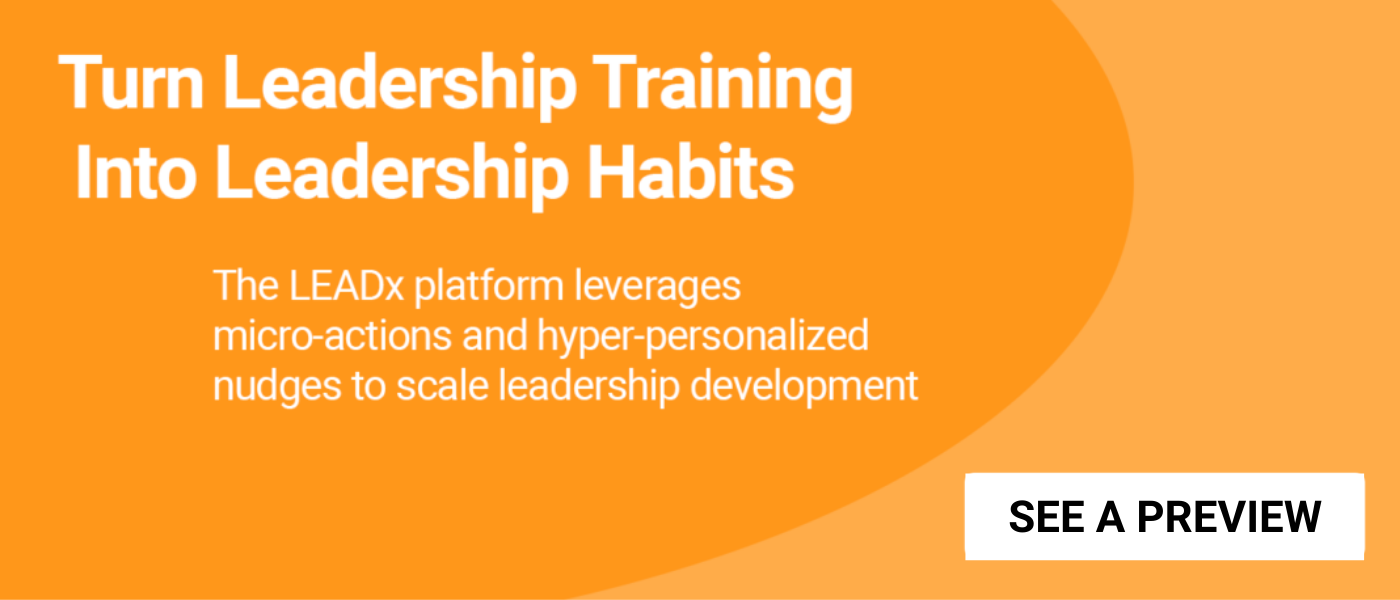
How do you effectively develop 800 people managers when they are dispersed across Europe, the U.S., and greater Asia? And of those 800, how do you onboard some 100 new leaders each year, and how do you reach and develop the frontline leaders?
These are just some of the many challenges faced by Bettina Koblick, the Chief People Officer of UiPath. UiPath is an enterprise software company that builds robots that automate the repetitive elements of people’s work so they can focus on more high-value and fulfilling work.
I spoke with Koblick to pick her brain about how she develops 800 global leaders, and more generally, to understand how she thinks about and approaches leadership development.
This interview has been edited for clarity and length.
Leadership Development Should Be Outside-in, Not Inside Out
Kevin Kruse: What advice would you give to someone who is earlier in their career and moving into a leadership development role for the first time?
Bettina Koblick: Think “outside-in,” and you will be much smarter, much more informed about your audience. I wish somebody had told me that sooner.
Kruse: You mentioned using pulse surveys to look “outside-in.” How does that work?
Koblick: A leader taught me some time back that you can't just have pressure from above, you have to have fire from below. I'm a true believer in the upside-down triangle, where information streams from the frontline employees to the leadership development. Then, they can effectively support and develop leaders.
The pulse survey is how we open up that valuable stream of feedback from the frontline. We do our engagement survey once a year, but we have to pulse more often than that to check if behavioral change is actually happening. The pulses cover the information and behaviors we really want to know about. Then, if the behaviors aren’t happening, we can adjust our approach.

Kruse: How often are you doing a pulse? Is it monthly, quarterly, as-needed?
Koblick: The tool we use can be pulsed in a number of ways. People can use it within their teams at any time, but we also have a strategy enterprise-wide. For example, we use the tool to check that our leaders are doing a certain behavior (like having conversations with their managers). We phrase these pulses in a very simple way: “Have you had a conversation with your manager lately?”
For the enterprise-wide pulses, which are a little bit less frequent, we try to pair the pulse with important moments in time. So, once a quarter we’ll ask a question like the one above. We also ask questions like, “Do you understand what's important in your daily work?” People tend to answer these simple questions in a way that gives good insights into what our leaders are doing.
I think of these pulse surveys more generally like this: “How are you going to bake someone's favorite birthday cake if you don't ask them what flavor cake they want?” It's so simple, but you have to ask. We don't know best, they know best. It’s on us to ask.
Teaching Frontline Leaders to Fish (in Their Own Way)
Kruse: How do you approach frontline leader development?
Koblick: We want to be very clear with frontline managers, and all leaders frankly, around the experience we want to leave our people with. We also want to be clear about their responsibility around creating that experience. The way we frame this is that, fundamentally, we want to make sure people are heard, treated fairly, and have clarity and context. We build competencies around those outcomes, but we really try not to train those competencies in a corporate way.
For example, people need clarity and context from their frontline leaders. Well, we train people to pick up the phone and call your person when they need clarity. Same with feedback. Ask for and give feedback when you have the time and when you need it. These things don’t have to be so structured all the time. That said, we do give structure and clarity around our expectations from frontline leaders. Then, the idea is to teach them how to fish, but to let them do it in their own way and style.
We encourage frontline leaders to practice and apply their learnings in a way that works for them and for their schedule. But, we also pulse our employees to ask, “Hey, have you had a good conversation with your manager lately?” Based on that pulse, we’ll quickly see: “Yes, this group is doing well,” or, “No, this group over there isn’t doing so well.” We give freedom in the application, but pay attention to the results. We strip our goals down to their simplest form.
We also make sure to give our frontline leaders the time to do what's necessary, which is speak with people, connect with people, give clarity and context, and treat people fairly. We don’t make them fill out a bunch of forms or go into a bunch of systems.
How UiPath Onboards 80-160 New Managers Around the Globe Each Year
Kruse: How do you onboard 80 to 160 new managers around the globe each year?
Koblick: I’m so passionate that none of this learning can happen at a single point in time. It needs to be part of a bigger system. That means pulling a thread through the entire person’s journey, and doing so in a way that hits the key moments the hardest. For instance, there's an interview component, our talent assessment before hiring, an onboarding component, and a promotion to manager component. There will also be, every year, an opportunity to refresh and take these learnings again.
I’m also passionate that this learning should happen in a variety of different ways—online, leader-led, traditional training, pulses, ongoing discussions, “learning teaching, learning teaching,” and more.
So there’s not one clean answer to this question. That’s because first of all, people don’t learn the same. And second, the learnings have to happen in the right way and at the right time for each individual. Companies need to learn to be comfortable with that. It's okay if the learning moment doesn’t hit leaders right away. Just keep talking about the principles. That's a good thing.
Working Smart, Not Hard to Develop Leaders
The common theme, and really the solution to UiPath’s great challenge of developing leaders around the world, is to work smart, not hard. For Koblick, working smart means surveying employees often to understand how leaders are doing. Equipped with information about what’s working and what isn’t, it’s much easier for her to support and develop leaders.







